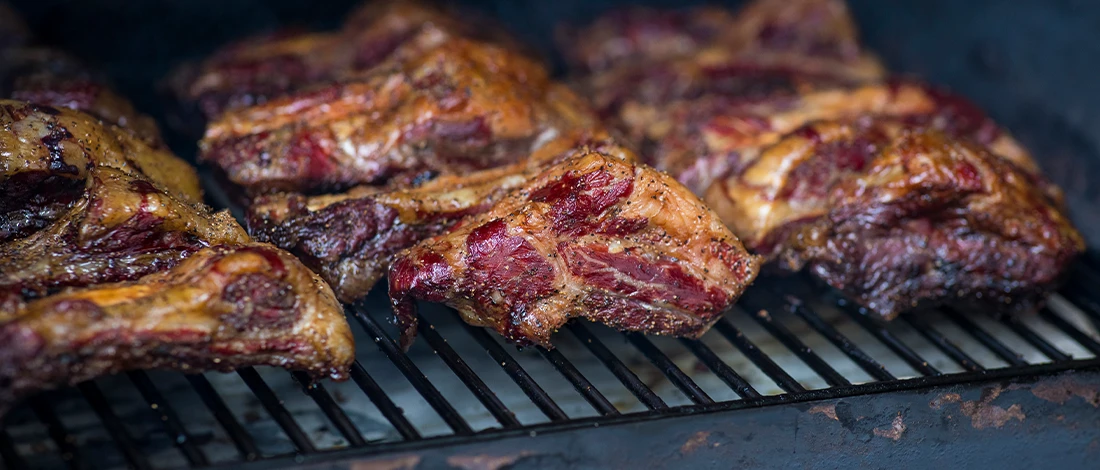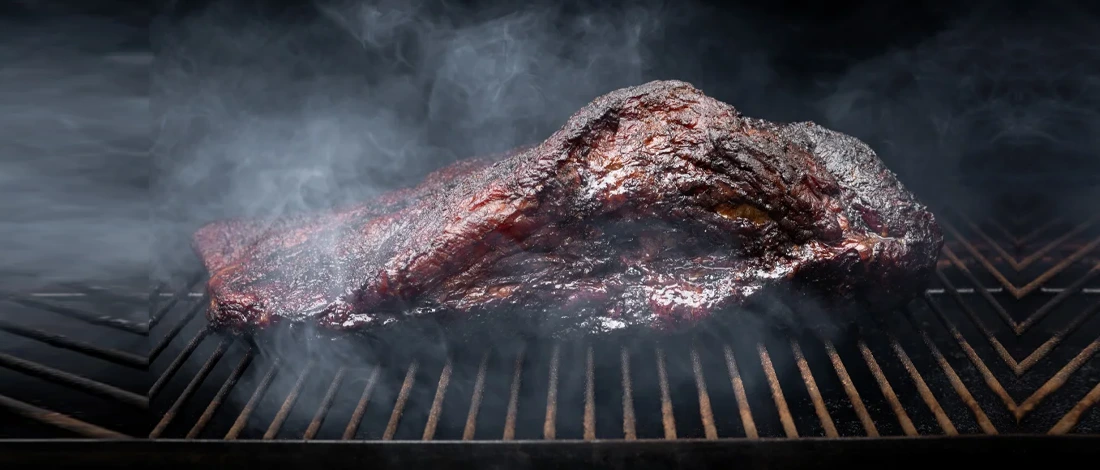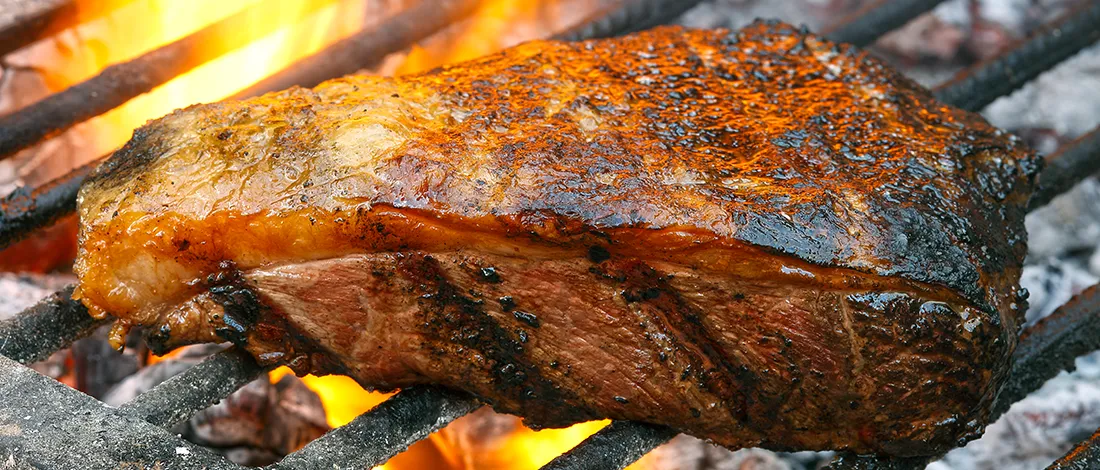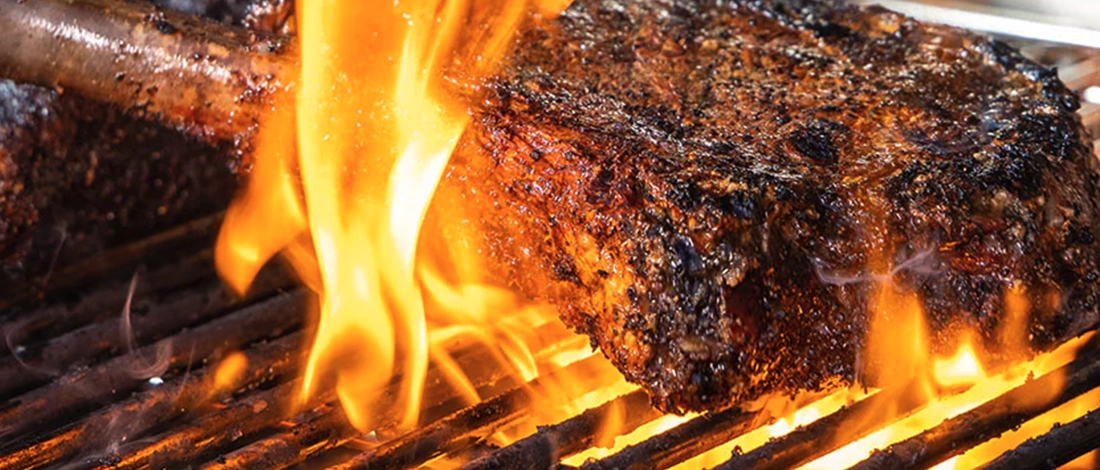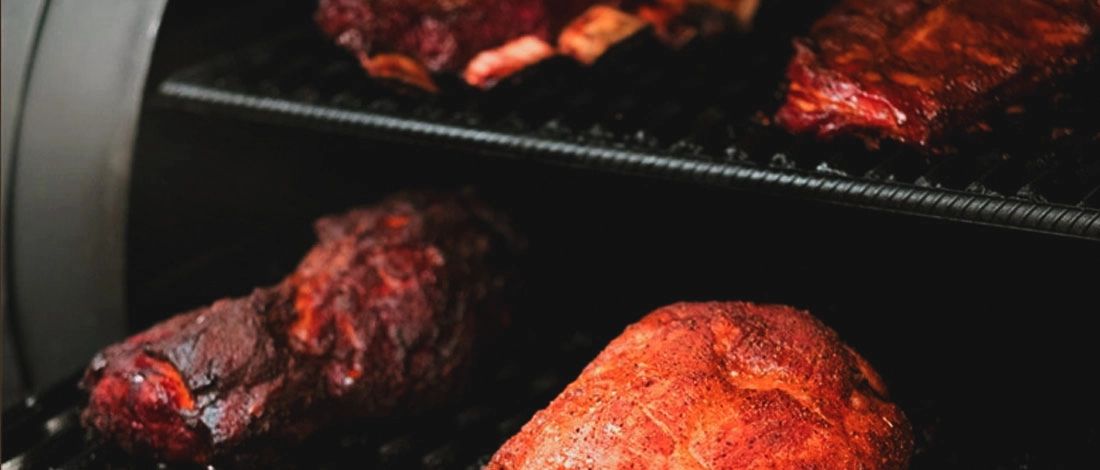The goal of every pitmaster: a brisket with deep bark and succulent, smoky flavors. But there’s a hot debate on the best temperature to achieve this.
I’ve experimented with different brisket smoking recipes for years, including smoking at different temperatures. I found out that smoking at 250 degrees provides the best results when done right.
Today, I’ll tell you exactly how long it takes to smoke a brisket at 250 degrees, including all my tips and tricks for the best-smoked brisket.
Quick Summary
- Smoking brisket at 225 and 250 degrees results in different meat.
- A brisket needs roughly 1 to 1.5 hours per pound at a smoking temperature of 250 degrees.
- You should smoke a brisket for an hour to an hour and a half per pound at 250 degrees.
- There are several tips you can apply when smoking meat for the best results.
How Long to Smoke Brisket at 250 Degrees?
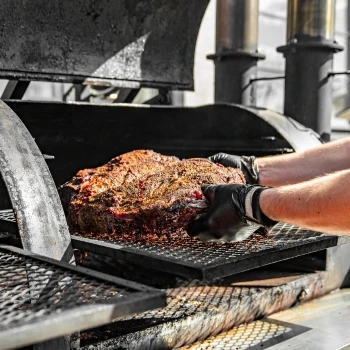
Smoke brisket at 250 degrees for an hour to an hour and a half per pound. For example, a 10-pound brisket takes ten to fifteen hours to cook. Generally, most briskets take between 8 to 16 hours to cook at 250 degrees.
Brisket cooks more quickly at 250 degrees than at 225 degrees, but it still has time to get a tender texture. Also, 250 degrees is the perfect temperature for fat rendering. Once the fat cap melts, it creates a layer of fat on the brisket’s surface.
Smoking at 250 or 225 Degrees?
Brisket can be smoked at a low temperature of 225 degrees or a higher temperature of 250 degrees. Smoking at 225 degrees is good for brisket because this meat has more connective tissues than most other cuts. Smoking breaks down these tissues, so you have tender meat.
Cooking brisket at a high temperature (250 degrees and above) causes the collagen fibers to tighten, resulting in tough meat. However, 250 degrees isn’t too high, and this temperature creates an evenly cooked brisket that’s easier to slice compared to cooking at 225 degrees.
Ultimately, cooking at 225 degrees creates more tender and moist meat, but cooking at 250 degrees results in more evenly cooked meat with a better texture. Which one you choose is up to your personal preference.
“Smoking a brisket on a pellet grill is one of the easiest ways to cook your brisket at a steady temperature while also infusing natural smoke flavor. One of the most fun aspects of pellet grilling is experimenting with smoke flavors -- like apple, oak, or maple.”
- Traeger, A Leading Grill Brand
Also, the difference in cooking time when smoking at these two temperatures is huge. The beef brisket cooks faster at a higher temperature. For example, increasing the temperature by just 25 degrees cuts the cooking time in half. On the other hand, smoking a brisket at 225 degrees takes an hour and a half to two hours per pound. This means a ten-pound brisket needs 15 to 20 hours to finish smoking.
For example, a 15-pound brisket will need about 10 hours to cook at 250 degrees, but it would take twice as long when smoking at 225 degrees.
Advantages of Smoking Brisket at 225 Degrees
If you’re a newbie to smoking brisket, it’s better to go for the lower temperature on your smoker. The brisket will cook more slowly, which means less chance of something going wrong. Essentially, you’re giving yourself some wiggle room when smoking at 225 degrees.
Also, if you’re smoking the flat of the point on the brisket, it’s better to go for a lower temperature. These are smaller cuts, especially the point, and cooking beef brisket at a lower temperature means a lower chance of drying out a smaller cut.
In case your beef brisket has only a little marbling and a small fat cap, it’s also better to go with a lower temperature. Fat is an insulator that slows down the brisket cooking process. If there’s not much fat, the beef brisket can dry out at a higher temperature. Plus, melting fat aids meat moisture.
Smoking at a lower temperature also results in a better smoky flavor. The meat cooks slowly, and the smoke has better retention at a low temperature. The result is a delicious flavor profile.
Advantages of Smoking Brisket at 250 Degrees
Smoking at 250 degrees also has several advantages. This smoking temperature is best when smoking a whole-packer brisket. This cut can weigh up to 20 lbs, and if you smoke it at a low temperature, it’ll take a long time. Plus, a full brisket can withstand high temperatures well and won’t dry out.
Once again, you should consider the fat cap thickness and level of marbling. If you cook brisket with a lot of marbling and a thick layer of fat on top, go for a high temperature. The fat will render and keep the meat moist without drying it out.
Smoking at 250 degrees doesn’t have quite as smoky flavor as smoking at 225 degrees. However, there’s a lot of humidity in the smoker, which helps the meat retain moisture and have a smoky taste.
Overall, the main benefit of cooking briskets at 250 degrees is the shorter cooking time, and the end result is a juicy steak.
Related Articles:
How to Know the Brisket is Done?

There are a few ways to tell a smoked beef brisket is done:
- Use a meat thermometer — To check the meat temperature, you have to put the thermometer into the thickest part of the brisket. Make sure not to place it in the bones or fat. The cooked brisket’s internal temperature should be 165 degrees when fully cooked [1].
- The poke test — Press your finger into the thickest part of the brisket. If it feels like you’re pressing into a spongy surface, the brisket is done.
- The probe test — Use a probe to check the tenderness. Stick the probe into the brisket. If it feels like going through soft butter, it’s done. You can use a small sharp knife. Insert it into the thickest part and twist. If it feels tender when twisting, the brisket is cooked.
- The bark — Is the dark layer of fat and spices on the brisket’s surface that feels crusty. If it’s dark brown and starting to flake off, you have a cooked brisket.
- Juices — Check the brisket color and juices. If the juices run clear and the meat isn’t pink, it’s safe to assume the brisket is completely cooked.
Of course, these are general guidelines. Always use your judgment when cooking any kind of meat. If you’re in doubt, it’s better to cook the meat a bit longer. Finally, make sure to use a clean and sanitized thermometer and utensils so you don’t get bacteria into the meat.
Ways of Smoking Brisket

There are several ways to smoke a brisket. Each way has a slightly different flavor, so be careful when choosing a smoked brisket recipe. The temperature, type of wood you use, and smoking length can differ in different recipes.
Here are the ways of smoking a brisket:
1. Texas Crutch
Texas Cruch is the most popular brisket smoking method. You need to wrap the brisket in aluminum foil or butcher paper after it’s been smoking for a few hours. Wrapped brisket foil speeds up the cooking time.
The foil creates a steamy environment, which speeds up the cooking process, and you have more tender meat. You need to smoke the brisket for about eight hours at 250 degrees. Then remove it from the smoker, wrap it in foil, and smoke for an additional hour or two.
This is a great method if you’re short on time or want to ensure a juicy brisket.
2. Reverse Sear
Reverse sear is the opposite of the Texas Cruch. You cook the brisket at a high temperature for a short time and then sear it over a hot fire.
You need to smoke the brisket for a few hours (usually at 250 degrees). Then remove it from the smoker once it reaches the desired internal temperature and sear over hot heat for one or two minutes per side.
The goal of the reverse sear is a crisp bark and a juicy interior.
3. Low and Slow

Low and slow cooking is the traditional brisket smoking method which results in a tender brisket. You smoke the brisket for a long time at a low temperature (usually around 225 degrees).
It takes 12 to 14 hours to smoke beef brisket using this method. You should start early in the day, or you’ll have to stay up most of the night.
4. Indirect Heat
The indirect heat method uses a smoker but not direct heat from the coals or wood. You should use a heat diffuser to create indirect heat.
This method is best if you’re worried about flare-ups. You’ll still have a delicious smoky flavor, but you don’t have to worry your brisket will burn.
5. Oven
Smoking in an oven is a good way to get a smoked brisket without actually needing a smoker.
You need to preheat the oven to 250 degrees. Put the brisket in a baking dish and cover it with foil. The baking dish should be in the middle of the oven rack. Bake the brisket for about three hours or until it reaches an internal temperature of 165 degrees.
6. Sous Vide
Sous vide is a great choice to ensure you have a tender and juicy brisket with minimal effort. However, this method requires some equipment: a sous vide machine and a large pot of water. Plus, you’ll have to finish cooking smoked brisket in an offset smoker.
Heat the water, place the brisket in the machine, and turn on the timer. Once the timer is done, remove the brisket and finish off in the smoker.
FAQs
Is 250 Degrees Too Hot to Smoke a Brisket?
No, 250 degrees isn’t too hot to smoke a brisket. This is an ideal temperature for rendering fat, which ensures tender meat.
Is it Better to Smoke a Brisket at 225 or 250 Degrees?
It’s better to smoke brisket at 225 degrees if you want maximum tenderness, but it’s better to smoke briskets at 250 degrees if you want the best smoky flavor and faster smoking time.
Can You Overcook a Brisket at 250?
Yes, you can overcook a brisket at 250. Overcooking will create dry and chewy meat. Check the brisket’s internal temp to avoid overcooking.
References:
- https://www.usda.gov/media/blog/2013/03/25/spring-food-safety

